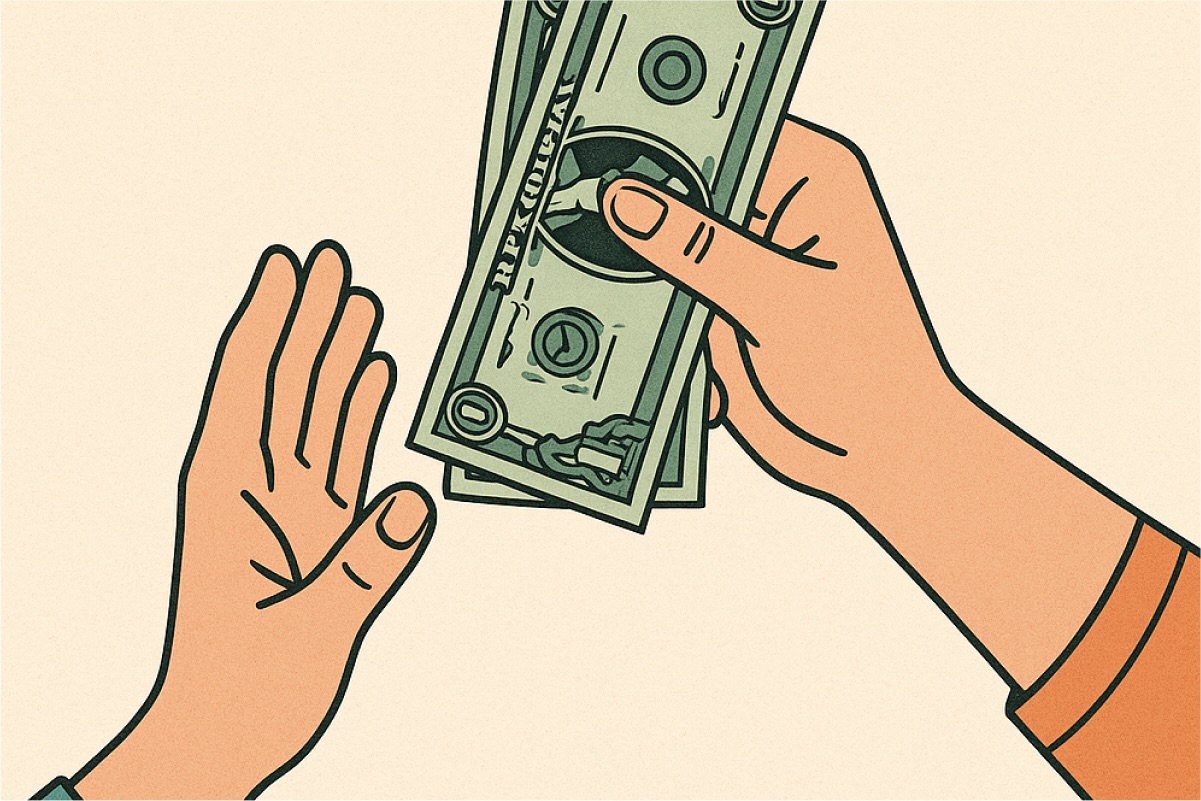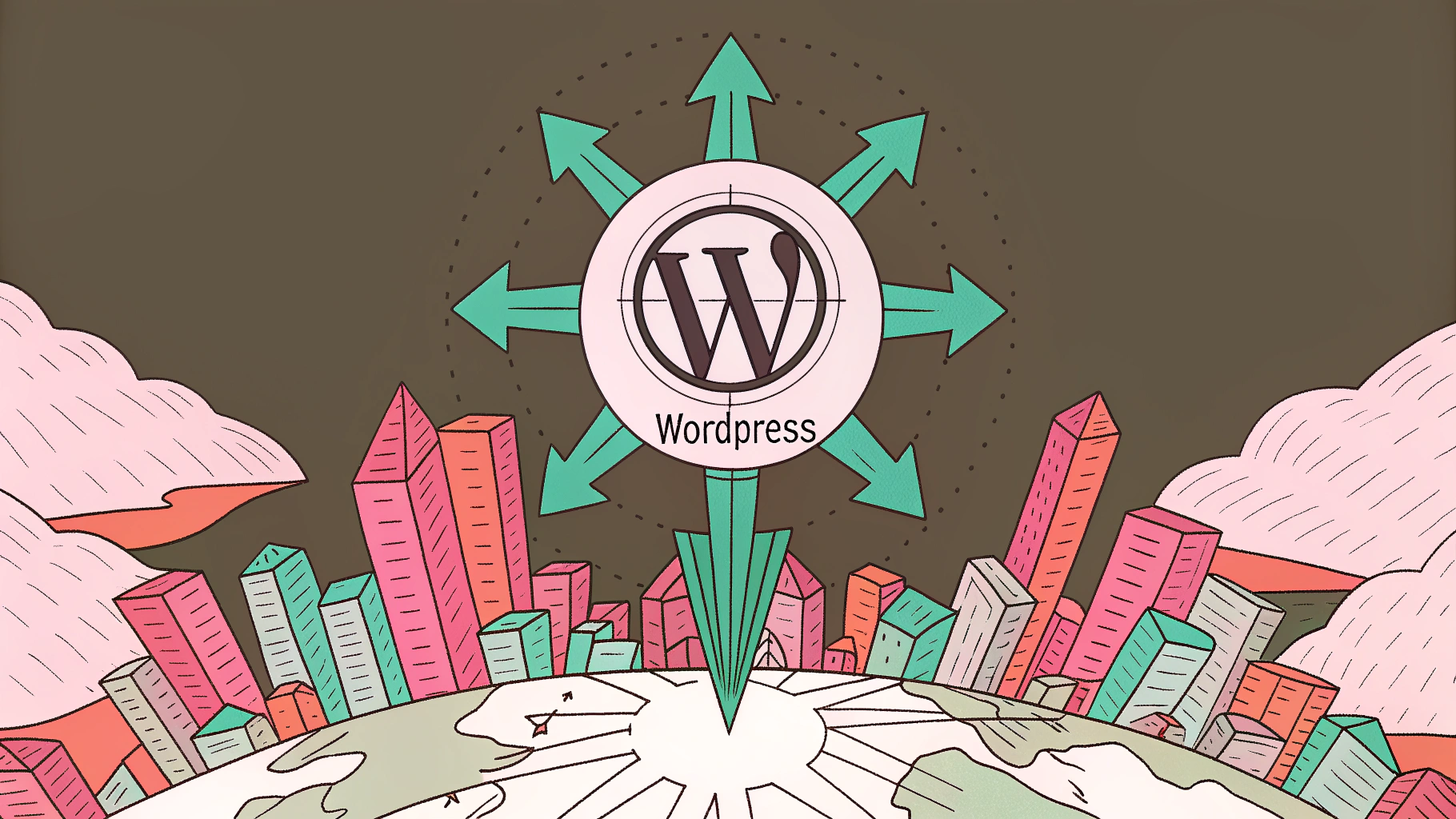Turning Your Blog into a Money-Making Machine
You pour hours into your blog. The writing, the research, the late-night edits—it's a real commitment. But for a lot of bloggers, the biggest challenge isn't creating valuable content. It's figuring out how to monetize a blog in a way that actually pays off. If you've ever wondered why your hard work isn't translating into real income, you're definitely not alone.
Most people start blogging as a passion project. Maybe you wanted to share your expertise, build a community, or just have a creative outlet. But there's nothing wrong with wanting your blog to pay the bills (or at least cover your coffee habit). In fact, treating your blog like a business—with clear goals and a real blog business model—is the only way to turn it into a reliable source of income.
Here's the reality: only a small percentage of bloggers make a full-time living from their sites. According to a 2023 Orbit Media survey, just 11% of bloggers report earning significant income. Most bloggers earn less than $1,000 a month, but there are outliers who pull in much more. Your results will depend on your niche, audience size, engagement, and the blog income streams you choose.
So, how to monetize a blog in a way that actually works? It comes down to three main categories:
- Promoting external brands or products (think affiliate marketing, sponsored content, or display ads)
- Selling your own products or services (like digital downloads, courses, or consulting)
- Creating gated or premium content (memberships, paid newsletters, or exclusive resources)
The most successful bloggers rarely stick to just one method. They mix and match, building multiple blog income streams that support each other. This approach not only boosts your earnings, but also protects you if one revenue source dries up. It's the difference between blogging for profit and just hoping for the best.
If you're serious about learning how to monetize a blog, you're in the right place. This guide breaks down 15 proven strategies for 2025—covering both beginner-friendly options and advanced tactics for established bloggers. No matter your experience level or blog size, you'll walk away with practical ideas you can start using right away. Ready to dive deeper? Explore other resources under our Blog Monetization & Business category, featuring in-depth guides on revenue strategies, programmatic SEO playbooks, and entrepreneurship insights to help you turn your content into profit.
Ready to treat your blog like a real business? Let's get into the strategies that can turn your passion into profit.
5 Beginner-Friendly Ways to Monetize Your Blog
Getting your first blog income stream feels like a milestone. Most bloggers start small, and that's totally normal. You don't need a massive audience or a fancy setup to begin earning. The key is picking methods that fit your current blog size and skill set. Here are five proven ways to start making money from your blog, even if you're just getting your feet wet.
Display Advertising: The Simplest Starting Point
Display ads are the classic entry point for blog monetization. Platforms like Google AdSense let you place ads on your site and pay you based on impressions or clicks. It’s easy to set up: you add a snippet of code, and ads start showing up almost instantly. Most beginners use blog advertising networks like AdSense because there’s no minimum audience requirement to apply.
But here’s the catch: ad revenue depends on your traffic. Typical earnings range from about $3 to $25 per 1,000 views, depending on your niche and audience location. If you’re getting a few hundred visits a month, you might only see a few dollars. Still, it’s a low-effort way to dip your toes into blog traffic monetization.
- Pros: Easy to set up, passive income, works for almost any niche.
- Cons: Requires significant traffic for meaningful income, can clutter your site if overused, may slow down page load times.
If you go this route, keep ad placement in mind. Too many ads can annoy readers and hurt your reputation. Try placing ads in the sidebar or between posts, not right in the middle of your content. And always test your site speed after adding ads. Quality content is what brings people back, so don’t let ads get in the way.
Affiliate Marketing: Earn Commissions from Recommendations
Affiliate marketing for bloggers is one of the most popular ways to earn money with a small audience. The idea is simple: you recommend products or services, and if someone buys through your unique link, you get a commission. Programs like Amazon Associates, ShareASale, and Impact are open to beginners and cover almost every niche.
The trick is to only promote stuff you actually use or believe in. Readers can spot a fake recommendation a mile away. Plus, you’re legally required to disclose affiliate relationships (usually with a simple note at the top of your post). Authenticity and transparency are what build trust—and trust is what gets clicks.
- Pros: No need to create your own product, works with small audiences, can be very profitable in the right niche.
- Cons: Income can be unpredictable, requires trust with your audience, some programs have strict rules.
To get started, write honest reviews, tutorials, or resource lists. Use your affiliate links naturally—don’t force them. And always check the terms of each program. Some, like Amazon, have specific rules about where and how you can share links. If you’re consistent and genuine, affiliate marketing can become a solid part of your blog income streams.
Sponsored Content: Get Paid to Feature Brands
Sponsored content partnerships are a step up from ads and affiliate links. Here, brands pay you to write about their products or services. This could be a full blog post, a product review, or even a mention in your newsletter. Compensation varies a lot, but even smaller blogs can land deals if they have an engaged audience or a unique niche.
You can find opportunities in two ways: brands might reach out to you, or you can pitch them directly. There are also platforms like IZEA and Cooperatize that connect bloggers with brands. Rates depend on your traffic, niche, and engagement, but sponsored posts often pay more than display ads—sometimes a lot more.
- Pros: Higher earning potential, builds relationships with brands, can boost your authority.
- Cons: Requires some audience size and trust, must follow disclosure rules, can feel inauthentic if not handled carefully.
To succeed, only accept sponsored content that fits your blog and audience. Always disclose paid partnerships (it’s the law in many countries). And don’t be afraid to negotiate—your time and influence are valuable. If you’re just starting out, focus on building your audience and engagement first. Brands want to see that your readers actually care about what you say.

Donations and Tips: Let Readers Support Your Work
Some readers are happy to support creators directly. Platforms like Ko-fi, Buy Me a Coffee, and Patreon make it easy to accept donations or tips. This model works best for blogs that provide unique value, like in-depth tutorials, personal stories, or creative work.
The key is to ask for support without being pushy. A simple button in your sidebar or a note at the end of your posts is usually enough. Some bloggers offer perks—like bonus content or early access—to encourage regular support. But even a one-time tip can be a nice boost.
- Pros: No minimum audience size, builds community, flexible and easy to set up.
- Cons: Income is unpredictable, works best with a loyal audience, may not suit every blog niche.
If you’re providing real value and building relationships, don’t be shy about letting readers support your work. Just keep it low-pressure. People appreciate honesty and will chip in if they feel connected to your content.
Freelance Services: Leverage Your Blog Expertise
Your blog is proof of your skills. Many bloggers use their site as a portfolio to land freelance gigs—writing, consulting, coaching, design, you name it. If you’re sharing advice or tutorials, you’re already showing potential clients what you can do.
To get started, add a "Work With Me" or "Services" page to your blog. List what you offer, share testimonials if you have them, and make it easy for people to contact you. Sites like Upwork or Fiverr can help you find your first clients, but your blog is often the best place to showcase your expertise.
- Pros: Direct income, builds authority, doesn’t require a huge audience.
- Cons: Time-intensive, income isn’t passive, can be hard to scale.
If you’re not sure what to offer, look at what readers ask you about most. Maybe it’s editing, social media help, or one-on-one coaching. Start small, deliver great results, and word will spread. Freelance services are a smart way to turn your blog business model into real cash, even before you have big traffic numbers.
No matter which method you choose, consistency is everything. High-quality content attracts readers, builds trust, and opens the door to more blog income streams. Tools like Republish AI's AI Blog Editor can help you keep publishing regularly, so you can focus on growing your audience and experimenting with new monetization strategies.
Another way to monetize your blog is by offering programmatic SEO. Read the guide on Programmatic SEO: the ultimate guide to scaling your search traffic for more information. If you’re knowledgeable about SEO, you can help businesses optimize their content at scale. This is especially valuable for companies looking to dominate search rankings without the hassle of manual optimization. By offering this service, you not only help clients grow their traffic but also position yourself as an SEO expert, making your blog a go-to resource for learning and hiring.
Ready to level up? The next section covers advanced monetization strategies for bloggers who want to take things further and build real passive blog revenue.
5 Advanced Strategies for Established Bloggers
Once you've built a loyal audience and established some authority in your niche, it's time to unlock the real earning potential of your blog. These advanced strategies aren't just about making a few extra bucks. They're about building a sustainable business model with passive blog revenue and long-term growth. If you're serious about learning how to monetize a blog at the highest level, these are the methods that can take you there.
Creating and Selling Digital Products
Digital product creation is the gold standard for blog monetization in 2025. Why? The profit margins are huge. You make something once, then sell it over and over with almost zero extra cost. We're talking eBooks, templates, printables, workbooks, stock photos, and even niche software tools. Bloggers in every niche are cashing in: food bloggers sell meal planners, finance bloggers offer budgeting spreadsheets, and travel bloggers create destination guides. The key is solving a real problem for your audience—something they'd actually pay for.
- Identify pain points: Survey your readers or check your most popular posts for clues.
- Choose a format: eBook, template, printable, or even a mini-course.
- Create high-quality content: Use clear design, actionable info, and polish.
- Set a smart price: Research what similar products cost, but don't undervalue your work.
- Promote everywhere: Feature your product on your blog, email list, and social channels.
Digital products are the ultimate in passive blog revenue. Once your product is live, sales can roll in while you sleep. But don't expect instant results. It takes time to build trust and get your first buyers.
Launching Online Courses and Workshops
Online courses are a step up from simple digital products. They command higher prices because they promise a transformation, not just information. If you've got expertise and can teach a skill—think SEO, watercolor painting, or even sourdough baking—there's probably an audience ready to pay for your knowledge. Courses can be self-paced video lessons, live workshops, or a mix of both.
- Pick a topic: Focus on something you know inside out and that your readers ask about.
- Outline clear outcomes: What will students be able to do after finishing?
- Choose a platform: Host on your own site (using WordPress plugins like LearnDash) or use platforms like Teachable or Thinkific.
- Record quality content: Good audio and video matter more than fancy editing.
- Market your course: Use your blog, email list, and even webinars to drive signups.
Courses work best when you can show real results. Testimonials, before-and-after stories, or even your own journey help build trust. And don't forget: pricing is flexible. Some bloggers charge $50, others $500 or more, depending on the depth and value. The main thing? You need to prove you can deliver.
Building a Membership Site or Community
Subscription-based blogging is all about recurring revenue. Instead of chasing one-off sales, you build a blog membership site where readers pay monthly or yearly for access to exclusive content, a private community, or even group coaching. This model is everywhere now—fitness bloggers offer workout libraries, writers run critique groups, and marketers host mastermind forums.
- Decide your offer: Exclusive articles, videos, live Q&As, or a private forum.
- Pick a platform: Use WordPress plugins like MemberPress or all-in-one solutions like Patreon.
- Set up payment and access: Make it easy for members to join and get what they paid for.
- Deliver consistent value: Regular updates and personal interaction keep people subscribed.
- Focus on retention: Welcome new members, ask for feedback, and reward loyalty.
Membership sites aren't "set it and forget it." They demand ongoing content and community management. But the upside? Predictable income and a tight-knit audience that actually cares about your work. If you can keep members happy, this is one of the most stable ways to monetize a blog.
Email List Monetization Tactics
If you're not using your email list for more than just sending blog updates, you're leaving money on the table. Email list monetization goes way beyond basic newsletters. You can launch your own products, promote affiliate offers, or even run sponsored emails for brands that want access to your audience. The trick is to segment your list—send the right offers to the right people, not a one-size-fits-all blast.
- Segment your list: Group subscribers by interests, purchase history, or engagement.
- Mix value and promotion: Don't just sell—share tips, stories, and free resources too.
- Test different offers: Try product launches, affiliate deals, or sponsored content.
- Track results: Watch open rates, click rates, and sales to see what works.
- Stay personal: Write like a human, not a robot. People buy from people they trust.
A well-monetized email list can outperform almost any other channel. But push too hard, and you'll see unsubscribes spike. It's a balancing act. The best bloggers treat their list like a VIP club—exclusive, valuable, and never spammy.
Podcast and Video Content Monetization
Written content is just the start. Expanding into podcasts or video opens up new monetization strategies for bloggers. Podcasts can attract sponsorships, paid interviews, or even listener donations. YouTube channels can earn ad revenue, brand deals, and drive traffic back to your blog. Plus, these formats help you reach people who'd never read a 2,000-word post.
- Pick your format: Audio podcast, YouTube channel, or both.
- Repurpose content: Turn blog posts into episodes or video explainers.
- Monetize directly: Use platforms like Spotify for Podcasters for ads, or YouTube for ad revenue.
- Attract sponsors: Pitch brands that fit your audience for sponsored segments.
- Promote your own offers: Use your show to sell digital products, courses, or memberships.
Podcasting and video aren't "easy money"—they take time to build up. But they create more touch points with your audience and can make your brand feel way more personal. Plus, you can cross-promote everything: blog, email list, products, and more.
If you're ready to level up, these advanced strategies can turn your blog into a real business. But none of them work without deep, high-quality content and a clear understanding of your audience.
Next up: how to maximize your blog income by diversifying revenue streams, optimizing your content, and scaling your business without burning out.
5 Strategic Approaches to Maximize Your Blog Income
Some blogs rake in thousands every month. Others barely cover their hosting bill. The difference? It usually comes down to strategy. If you want to turn your blog into a real business, you need more than just a few monetization tricks. You need a plan that covers every angle of blog revenue optimization, from how you earn to how you grow.
Diversifying Income Streams for Stability
Relying on a single income stream is risky. One algorithm update, a lost affiliate partnership, or a dip in ad rates can wipe out your earnings overnight. That’s why the smartest bloggers build a portfolio of blog income streams. Most experts recommend starting with two or three methods—think digital products, affiliate marketing, and display ads—then expanding as your audience and skills grow. This approach cushions you from sudden changes and helps you spot new opportunities for passive blog revenue.
Blog Type | Digital Products | Affiliate Marketing | Ads | Sponsored Content |
|---|---|---|---|---|
Personal Finance | 40% | 30% | 20% | 10% |
Food Blog | 25% | 35% | 30% | 10% |
Tech Review | 10% | 50% | 30% | 10% |
Lifestyle | 30% | 20% | 30% | 20% |
These numbers aren’t set in stone, but they show how a balanced blog business model can look. The key is to experiment, track your results, and adjust your mix as you learn what works for your audience.
Building Traffic Strategically for Monetization
Not all traffic is created equal. Ten thousand random visitors won’t help if none of them care about your offers. What you want is targeted, high-intent traffic—people who are actually interested in what you’re selling or recommending. That’s where SEO, social media, and smart content strategies come in. Focus on keywords that attract buyers, not just browsers. Use platforms like Pinterest or LinkedIn if your niche fits. And don’t forget to update old posts so they keep bringing in the right readers.
Republish AI’s AI Agent Nova can help you refresh outdated content, which is a proven way to maintain and grow your traffic over time. Keeping your best posts current means you keep ranking, and that means more of the right eyeballs on your monetized content.
- Identify your top-converting traffic sources (Google, Pinterest, email, etc.)
- Prioritize content that attracts buyers, not just readers
- Regularly update and optimize older posts for new keywords
- Test new channels, but double down on what works
Creating Content That Attracts Paying Customers
If your content doesn’t lead readers toward your offers, you’re leaving money on the table. The best blogs use a value ladder: free content brings people in, mid-tier content builds trust, and premium offers (like courses or memberships) convert your most loyal fans. Every post should have a purpose—whether it’s building your email list, promoting an affiliate product, or warming up readers for your own digital product.
- How-to guides that naturally recommend affiliate products
- Case studies showing results from your services or products
- Comparison posts that help readers choose (and click your links)
- Free resources (checklists, templates) that lead to paid upgrades
Think about your blog as a funnel. The top is broad, attracting lots of people. As readers move down, your content gets more specific and valuable, guiding them toward your monetized offerings. This is how content monetization platforms and smart bloggers turn casual visitors into paying customers.
Leveraging Analytics to Optimize Revenue
Pageviews are nice, but they don’t pay the bills. What really matters is which posts and pages actually make you money. That’s where analytics come in. Track metrics like conversion rates, affiliate clicks, ad RPM, and email signups. Use A/B testing to tweak your calls to action, landing pages, and even your headlines. Over time, you’ll spot patterns—maybe your product reviews convert better than your tutorials, or your email list drives more sales than your social media.
- Monitor which posts generate the most revenue (not just traffic)
- Test different placements for ads and affiliate links
- Segment your audience to send targeted offers
- Use data to decide where to invest your time and energy
Plenty of bloggers ignore analytics and wonder why their income stalls. Don’t be that person. The more you know about what’s working, the faster you can grow your passive blog revenue.
Scaling Your Blog Business for Growth
At some point, you’ll hit a ceiling if you try to do everything yourself. Scaling means building systems so your blog business model can grow without burning you out. That might mean hiring a virtual assistant, using automation tools, or outsourcing content creation. The goal is to free up your time for high-value work—like developing new products or building relationships with sponsors.
- Document your processes (content creation, promotion, email marketing)
- Automate repetitive tasks with tools or plugins
- Hire help for tasks that drain your energy or skills
- Invest in platforms that let you manage multiple blogs or content streams
Republish AI’s suite of tools is designed to help bloggers scale their content creation and management. When you spend less time on busywork, you can focus on the strategies that actually grow your income.
Mastering these five strategies won’t just boost your earnings—they’ll make your blog more resilient, more efficient, and a lot more fun to run. Next up: how to put it all together and build your own roadmap to blog monetization success.
Your Roadmap to Blog Monetization Success
Monetizing a blog isn’t some overnight win. It takes real time, consistent effort, and a willingness to experiment. But the rewards? They’re worth it. We’re talking about more than just extra cash. There’s the satisfaction of building something from scratch, the freedom that comes with passive blog revenue, and the chance to turn your passion into a real business. Plenty of bloggers have done it, and there’s no reason you can’t join them.
If you’re still wondering how to monetize a blog, remember this: the most successful bloggers rarely stick to just one method. They mix and match, combining different blog income streams to create stability and maximize their earnings. The three main categories? Promoting external brands and products (think affiliate marketing or sponsored content), selling your own products or services (like eBooks or coaching), and creating gated or premium content (such as membership sites).
What works best will change as your blog grows. Most people start with simple monetization strategies for bloggers—display ads, affiliate links, maybe a few sponsored posts. As your audience and authority build, you’ll have more options: digital products, online courses, even full-blown communities. The key is to let your monetization evolve alongside your blog.
Not sure where to start? Here’s a straightforward roadmap based on where you are right now:
- New bloggers (0-6 months): Focus on creating valuable content, building your audience, and testing basic monetization like affiliate marketing or display ads.
- Growing bloggers (6-12 months): Start expanding your monetization efforts. Try sponsored content, experiment with different blog income streams, and begin planning your first digital product.
- Established bloggers (1+ years): Dive into advanced strategies like launching online courses or building a membership site. Keep optimizing your existing revenue streams for blogging for profit.
It’s normal to worry about alienating your audience or feeling like an imposter when you start selling. Most readers actually expect bloggers to earn something for their work, especially if you’re providing real value. The trick is to be transparent, stay authentic, and only promote things you genuinely believe in. If you’re nervous, start small. You don’t have to launch a full product line on day one.
Here’s my challenge: pick one monetization method from this article and implement it in the next 30 days. Don’t overthink it. Every successful blogger started with a single step. The sooner you start, the sooner you’ll see what works for your audience—and for you.
And if you’re looking for a little backup, tools like Republish AI can help you keep your content pipeline full and your blog running smoothly. Consistent, high-quality content is the foundation of every successful monetization strategy. With the right support, you’ll have more time to focus on growing your blog income streams and testing new monetization strategies for bloggers.
Monetizing your blog is a journey, not a finish line. Stick with it, keep learning, and don’t be afraid to try something new. You might be surprised at just how far your blog can take you.



